The beaches with the best shells are brimming with natural treasures. It's time for a visit.
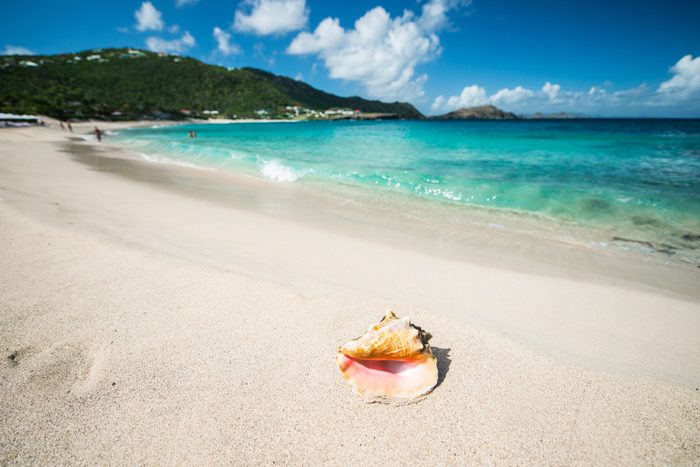
15 Beaches with the Best Shells in the World

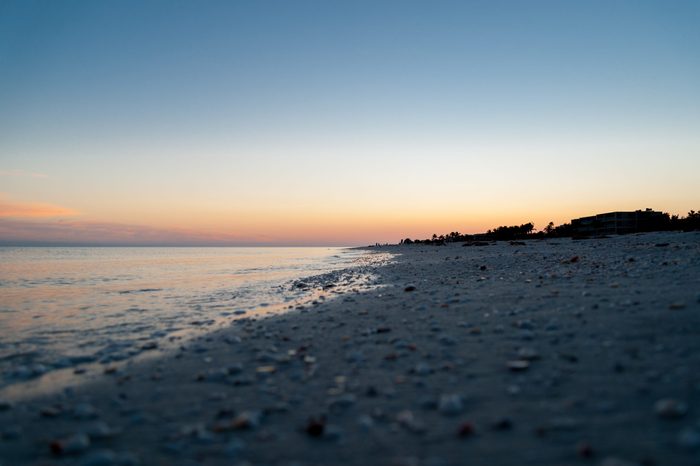
Sanibel Island
Location: Florida
Named the best shelling spot in North America by Travel + Leisure magazine, Sanibel Island—located near Fort Myers on the Gulf of Mexico—is a true haven for seashell-spotting enthusiasts.
“It turns out this region’s east-west topography makes it an ideal final resting place for an amazing variety of shells,” says Gabe Saglie, the senior editor of Travelzoo. “There are 400 varieties in all, rolling onshore by the thousands every day. Horse conches, jingle shells, giant cockles, calico scallops—take your pick. The Junonia shell is a locals’ favorite.”
There’s another must-see spot when you visit this Florida beach: Sanibel is also home to the Bailey-Matthews National Shell Museum, the only museum in the United States dedicated to shells.
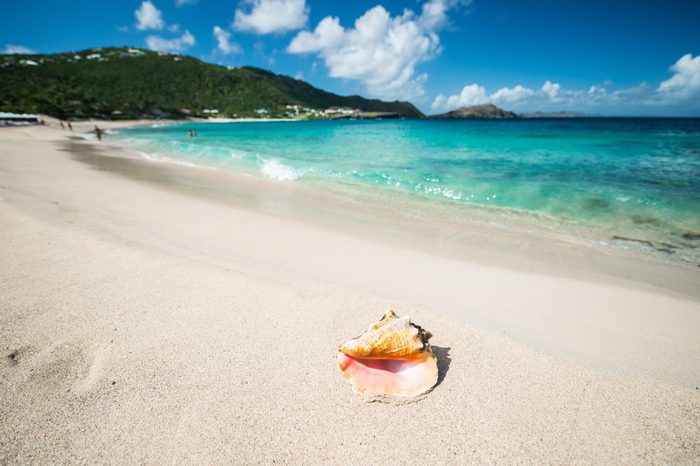
Shell Beach
Location: St. Barts
You don’t earn the name “Shell Beach” without having a truly impressive array of shells available—and that’s exactly what you’ll find at Shell Beach in Gustavia on the Caribbean island of St. Barths. In fact, there are so many shells, several inches deep, that you won’t be able to walk this beach with bare feet.
“Shell Beach is one part of the island where a ton of shells have accumulated on the shore,” says Sveva Marcangeli, the owner and founder of the travel blog Svadore.
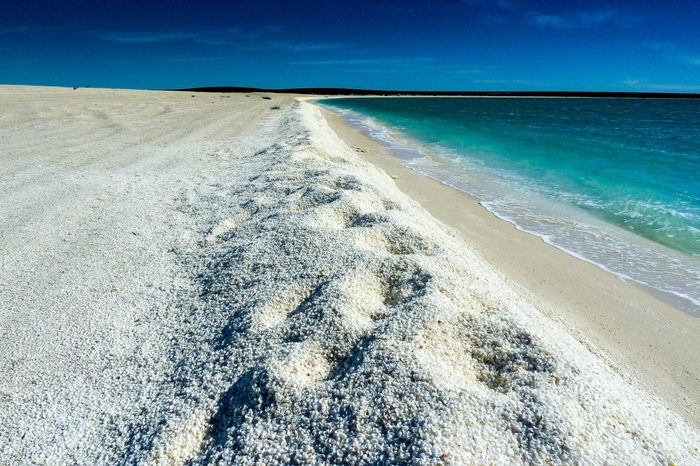
Shell Beach
Location: Australia
Thankfully, the name “Shell Beach” hasn’t been trademarked because there’s another location worthy of the same designation. This time, it’s in the Shark Bay region of Western Australia. While this beach may appear to be covered in pure white sand from a distance, there actually isn’t a grain of sand to be found—it’s entirely blanketed by billions of tiny white shells from the cockle species, running up to 10 meters deep in some sections.
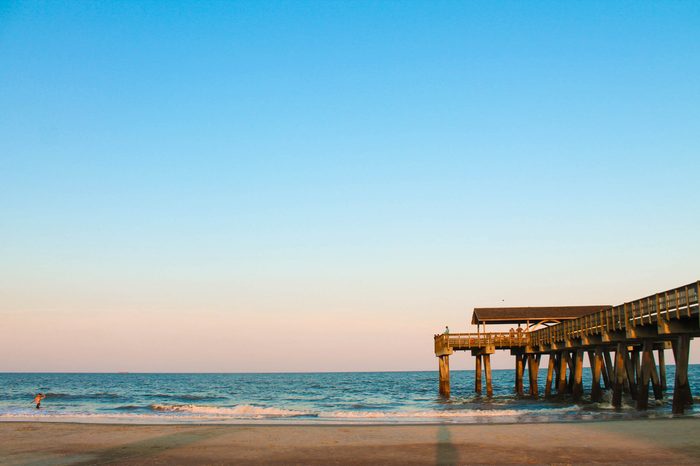
Tybee Island
Location: Georgia
Located 20 minutes from downtown Savannah, Georgia, Tybee Island is a 5-mile-long beach perfect for beachcombers. You’ll find a variety of seashells, including whelk, olive and moon snail in a wide array of colors. For instance, the ark shells, one of the most common bivalve shells, can be seen here in shades of gray, dark red, orange, gold and white.
Because of the changing tides, you never know the absolute best spot to find shells on Tybee, but oftentimes, you will find big shell deposits when walking along the sand. On calmer parts of the beach, there is a better chance of finding the more fragile shells, such as duck clams, pen shells, razor clams and angel wings.
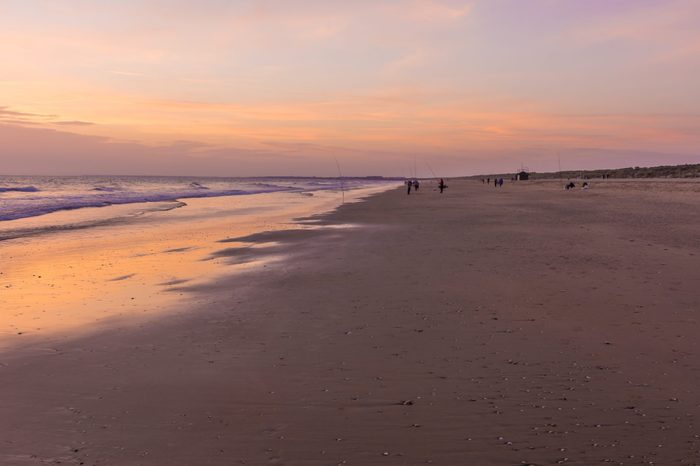
Playa de Punta Umbria
Location: Spain
In the autonomous community of Andalusia in Southern Spain, there is Punta Umbria, and it’s got phenomenal beaches with the best shells. “Very often, the low tides leave an amazing array of shells behind,” says Carlos Quintero, founder of Andalusia Lifestyles, a company that helps American citizens navigate retiring to Spain. “They tend to belong to the same type, like big clams, but they come in many different sizes, colors and shapes. Sometimes it is like a massive carpet of shells covering the shore—very spectacular!”
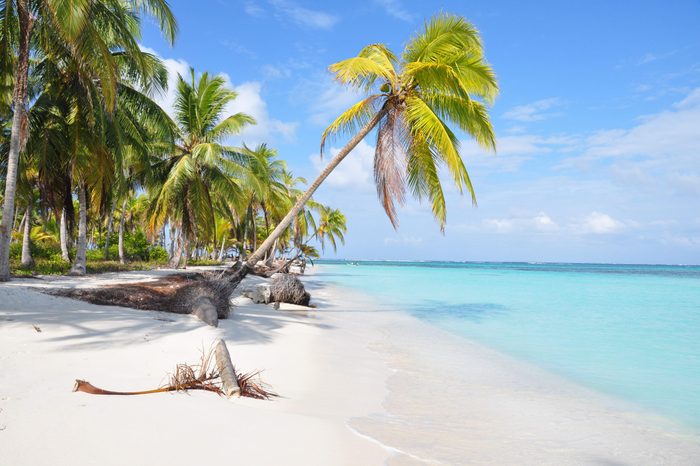
San Blas Islands
Location: Panama
An archipelago on the Caribbean shore of Panama, the San Blas islands are some of the most beautiful, remote beaches in the world, with coral reefs and lots of shells. “These reefs are just off the beaches, and there are barely any tides, so it’s possible to search for shells at any time,” says Jorge Bastos, co-founder of Travel Drafts.
“The most impressive shells I found in San Blas were the sand dollars, which are a species of sea urchins. Sand dollars have imprinted a leaf, which is so perfectly designed that, at first sight, it seems impossible that [they] aren’t manmade.” Although it may be very tempting to bring some shells home with you, it’s actually forbidden to do so in San Blas.
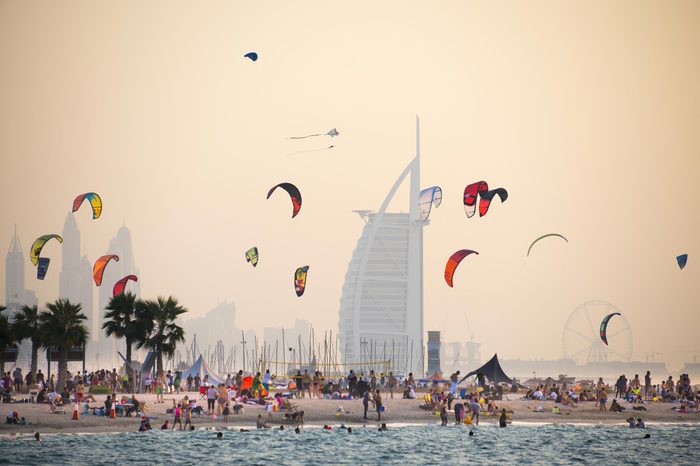
Kite Beach
Location: Dubai
A hot spot for kite surfers in the United Arab Emirates, Dubai’s Kite Beach can also provide thrills to those searching for beautiful seashells in the white sand. “I heard it’s best at low tide, but I was there in the afternoon and easily found shells,” says Christabel Lobo, a freelance writer and designer born and raised in Dubai. From this spot, you’ll also have a great view of the iconic Burj Al Arab, one of the world’s most luxurious hotels.

Cameron Parish
Location: Louisiana
Most people don’t think of beaches in Louisiana, but the shelling on the western side of the state, in Cameron Parish, is full of surprises. They call this part of the state “Louisiana’s Outback,” and it’s full of natural wonders (and alligators, which outnumber humans 10 to 1).
“Traveling the Creole Nature Trail is a terrific way to explore the area, as it offers 26 miles of natural beaches that are incredibly undeveloped but also easily accessible, making them the perfect locales for finding whelks, cockles, angel wings, cat’s eyes, olives, wentletraps, coquinas and periwinkles,” says Anne Klenke, vice president of destination development and community engagement at Visit Charles Lake. “Rutherford Beach in eastern Cameron Parish is one great site, and the smaller beaches west of Holly Beach are also prime shell-collecting territories.”
Why are shells so plentiful here? Located west of the Mississippi Delta, the beaches are constantly replenished by the Mississippi River’s southeast tidal flow, which carries rich deposits of driftwood and a wide variety of shells. Low tide following a storm system offers prime shelling.
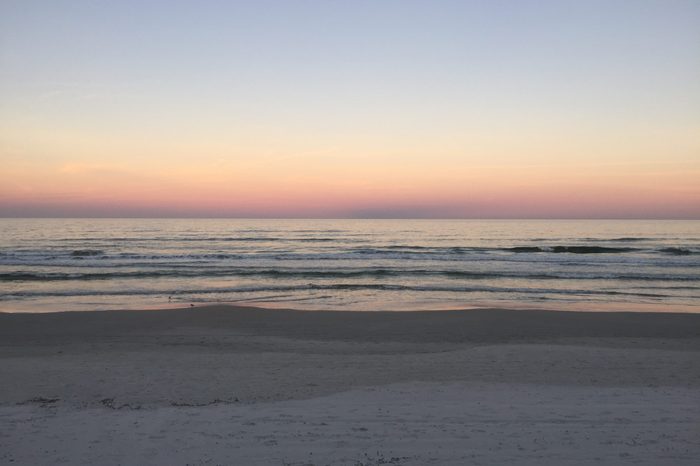
New Smyrna Beach
Location: Florida
Next on our list of beaches with the best shells is New Smyrna Beach, just south of Daytona—a postcard-perfect stretch where thousands of unique shells turn parts of the shore into a true treasure hunt.
“So many are in excellent shape,” says Rhonda Weaver, founder of travel blog Roaming Red Feather. “Rounded edges, different sizes and colors ranging from reds and whites to dark browns and pink too. Since there are so many seashells everywhere, it’s wise to make sure you have shoes you can slip on.” Just be careful if you enter the water, as this is also known as the shark attack capital of the world.

Cape Lookout National Seashore
Location: North Carolina
You may recognize the iconic lighthouse on North Carolina’s Crystal Coast, but it’s the 56-mile stretch of undeveloped shimmering beaches accessible only by boat that will catch a true shell-lover’s attention. Knobbed whelks, bay scallops, Scotch bonnets and other types of shells can be found washed up on these shores.
Try to comb the beach early in the morning, at low tide, after a storm or during times of lower visitation, such as the winter months, for the best yield. A basketball-sized helmet shell—four times bigger than average—was found here recently!
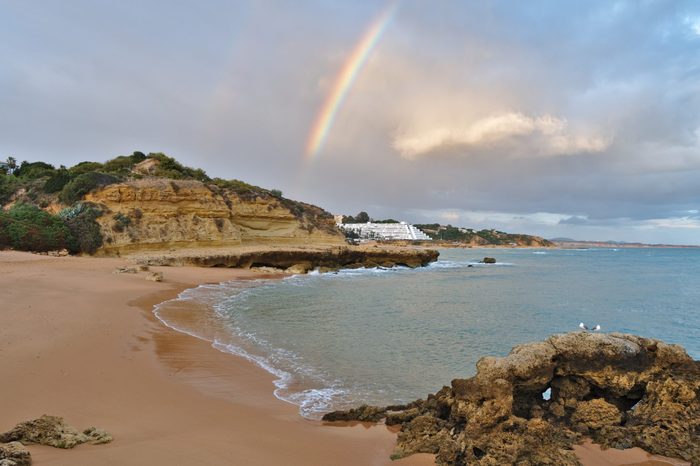
Praia dos Aveiros
Location: Portugal
Nestled in the town of Albufeira, Algarve, near the southern tip of Portugal, lies the beach Praia dos Aveiros. Known for its fine golden sand and the cliffs and rock formations flanking it on either side, the beach is also home to an impressive array of seashells. “If you come when the waves are rolling, you can see the shells from the water,” says Gareth Edmondson-Jones, a consultant at Breeze Airways. “It is awash with numerous snails, clams and all kinds of cool and fancy shells.”
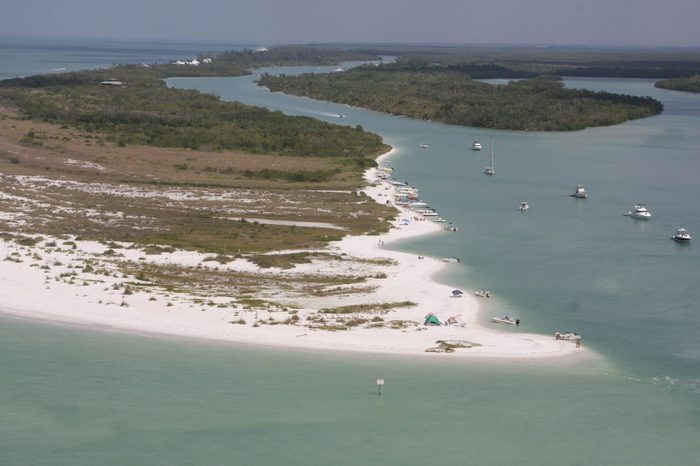
Keewaydin Island
Location: Florida
If you’re looking for an abundance of seashell-lined beaches, then this Florida beach area is made for you. “Keewaydin Island in Naples, Florida, is mostly uninhabited,” says Charles McCool, a travel happiness advocate. “If you visit on a weekday morning, by a private boat shuttle or eco-tour experience, you will likely have at least a mile of pristine beach to yourself. I found dozens of intact, unbroken and magnificent sand dollars.”
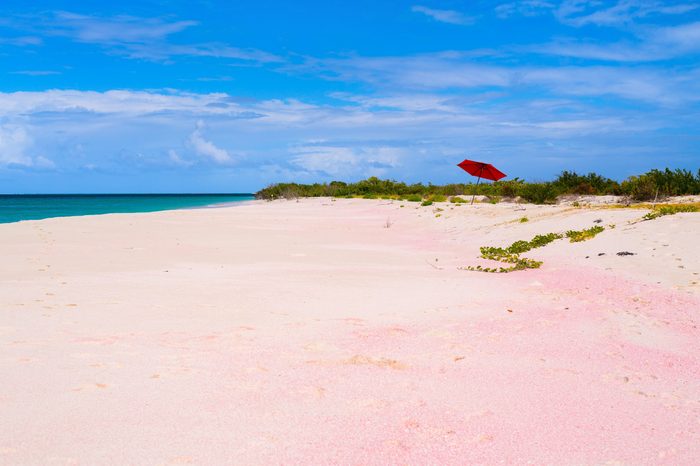
Low Bay
Location: Barbuda
If pink is your favorite color, then feast your eyes on the pink sand beach of Low Bay in Barbuda (one of the two main islands that make up the Caribbean nation Antigua and Barbuda). What gives it this rosy hue? Tiny pink, iridescent shells, which are sometimes so plentiful that they make a tikka tikka sound when the waves retreat.
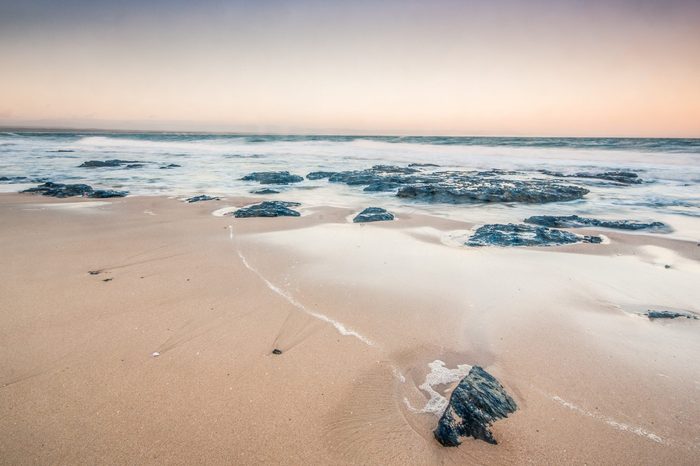
Jeffrey’s Bay
Location: South Africa
A treasure trove of shells awaits at South Africa’s world-famous Jeffrey’s Bay. While you can find them year-round, some claim winter is the best time to find seashells of all shapes, sizes and colors. If you can’t find what you’re looking for, visit the Jeffrey’s Bay Shell Museum, which houses more than 600 species from around the world. To connect with like-minded shell-lovers, don’t miss the annual Shell Festival held each fall.
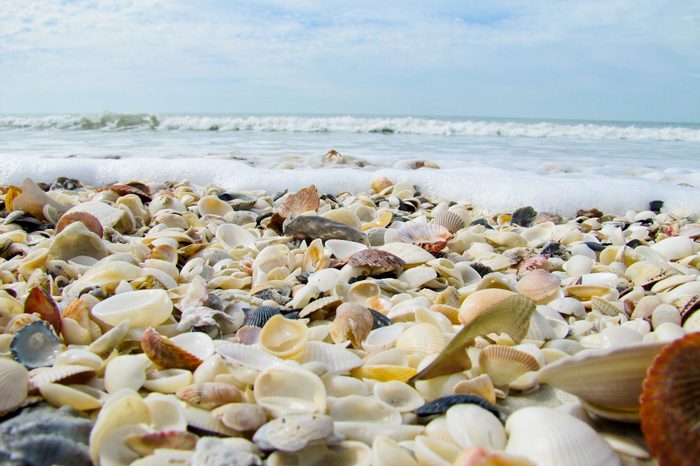
Somerset Creek Beach
Location: Bahamas
This mile-long beach on Andros Island—an archipelago within the Bahamas—boasts millions of tiny pastel-colored shells, sand dollars, conchs and other species. You’ll find the greatest abundance after a large storm, in the shallow pools. A fun fact about this island? It has the world’s largest collection of blue holes, which are one of the most stunning deep-sea sights in the world.
About the experts
|
Why trust us
Reader’s Digest has published hundreds of travel stories that help readers explore the world safely, easily and affordably. We regularly cover topics such as the best places to visit (and the best times to visit them), tips and tricks to zoom through airport security, flight-attendant secrets, hotel-room hacks and more. We’re committed to producing high-quality content by writers with expertise and experience in their field in consultation with relevant, qualified experts. We rely on reputable primary sources, including government and professional organizations and academic institutions as well as our writers’ personal experiences where appropriate. We verify all facts and data, back them with credible sourcing and revisit them over time to ensure they remain accurate and up to date. For this piece on beaches with the best shells, Jill Schildhouse tapped her experience as a travel writer with more than 20 years of experience. Read more about our team, our contributors and our editorial policies.
Sources:
- Gabe Saglie, senior editor at Travelzoo
- Sveva Marcangeli, founder of Svadore
- Carlos Quintero, founder and former leader of Andalusia Lifestyles, and adjunct instructor at the University of Arizona
- Jorge Bastos, co-founder of Travel Drafts
- Christabel Lobo, freelance travel writer and content strategist at Ohia Technology
- Anne Klenke, vice president of destination development and community engagement at Visit Charles Lake
- Rhonda Weaver, founder of Roaming Red Feather
- Gareth Edmondson‑Jones, communications consultant at Breeze Airways
- Charles McCool, founder of McCool Travel
- City of Sanibel
- Saint Barth’s Tourism: “Shell Beach”
- Western Australia Tourism: “Shell Beach”
- Visit Tybee Island
- Andalucía: “Playa Urbana de Punta Umbría”
- Panama Tourism Authority: “San Blas Islands”
- Emirates: “Kite Beach”
- Cameron Parish Tourism: “Visit Cameron Parish”
- Visit Florida: “New Smyrna Beach”
- National Park Service: “Cape Lookout – National Seashore North Carolina”
- Visit Portugal: “Praia dos Aveiros”
- Visit Florida: “Beach Guide: Keewaydin Island, a Remote Escape”
- Yacht Warriors: “Low Bay, Antigua and Barbuda”
- Jefferys Bay Tourism: “Jeffreys Bay”




















